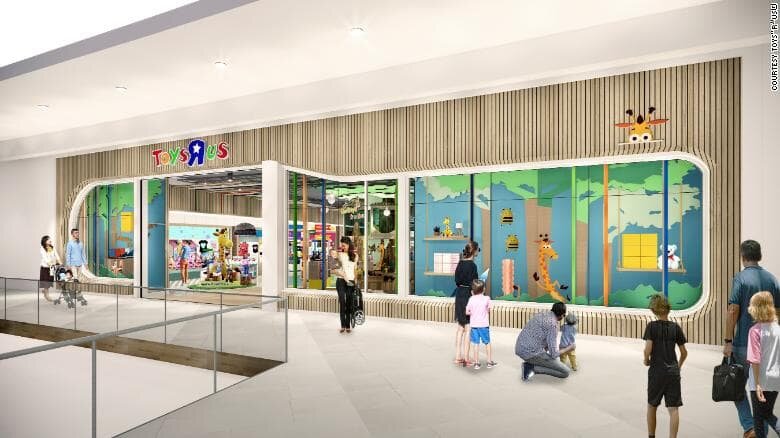The Future of Brick and Mortar Retail
Although the convenience and logistical advantage of ecommerce has sparked concern about whether physical stores have a chance in the future of retail, a recent U.S. Department of Commerce’s report on e-commerce sales tells a different story. The world may be digital, but 90% of retail sales still take place offline. People want what they want right away… and that’s one of the main advantages of brick-and-mortar stores.
There is a reason Jeff Bezos invested in Amazon Go stores and purchased Whole Foods - retail is not going extinct, it’s evolving.
However, just like Darwin’s concept - survival of the fittest - only brands that innovate in the retail space will survive. But what does innovation mean in the context of retail?
Focus on Streamlining the Customer Experience
Customer experience drives everything. If brick and mortar retail stores cannot compete with the convenience or personalized experience of an online store, then offline stores need to assess the wants of the consumer. Using the data from online ecommerce behavior to analyze consumer preferences and influence product development can potentially inform the inventory, the layout, and even what kinds of experiential elements need to be present in-store.
The worst part about shopping in a grocery or department store is the lines. Amazon solved this problem by creating a store where consumers could simply walk out with their items. Consumers crave convenience so much that cardless checkouts by phones are increasingly more common as well.
Today’s consumers are also obsessed with experiences - moments they can share online. Retail stores can offer excellent in-store shopping services in addition to a tangible experience.
Add In-Store Experiential Elements
how some brands created in-store experiences for their customers:
PHOTO COURTESY OF JCPENNEY
JCPenney - Sure, ecommerce has its perks, but in-store retail would argue that actually trying clothes on and feeling the texture and personality of the item makes a difference. That’s why JCPenney recently added one-on-one stylists for visitors in the dressing room.
Toys”R”Us - After closing their doors in 2018, Toys”R”Us is opening a set of new stores in Paramus, New Jersey and Houston, Texas. The focus on these stores is to build a fun community full of “Instagram-able experiences.”
PHOTO COURTESY OF CNN https://www.cnn.com/2019/07/18/business/toys-r-us-new-stores/index.html
“The new Toys R Us stores will serve as must-visit destinations for kids to learn, play, and fall in love with the latest and most popular toys, and for parents to have fun with their children and ignite their own childlike sense of play. The stores will be highly interactive with new events and activities every day,” said Richard Barry, CEO of Tru Kids and Interim co-CEO.
Form Connections
Partnerships and collaborations can amplify a brand’s purpose and make them stand out from competitors.
Brands like Toys”R”Us and b8ta realized that they are stronger when they work together. b8ta, the software-powered retailer responsible for partnering with the store to make the new Toys”R”Us immersive and experiential, shared a similar vision to Toys”R”Us: “to help customers discover, try, buy and learn about new products in real life.”
Having such a strong focus on the consumer experience also helps brands form connections with their shoppers. However, this connection can be stripped away at any moment. Since consumers can fact check any brand statement or mission, consumer trust is fragile. It is important for brands to give meaning to their processes, stay purpose-driven and mindful of their actions versus their values.
Being connected also means being connected to consumers across the board. Offline retail may have the majority of sales, but consumers still value convenience. If 2.71 billion people worldwide use a smartphone - retailers need to be on different channels, connecting with consumers on multiple levels.
Amazon, for example, is everywhere. Completely connected to the consumer, Amazon continually analyzes and optimizes the consumer experience to provide the most stress-free, frictionless environment possible. By developing an omnichannel approach, Amazon went from online book sales to delivering anything and everything.
Experiment with Different Formats
According to Moira Vetter, CEO of Modo Modo Agency, to be innovative is to be savvy:
“One of the greatest challenges in retail—and to those who sell through brick-and-mortar retail—is the ever-shrinking shelf real estate. We are working with a client who a decade ago created planograms and larger merchandising displays as a part of their product marketing. Increasingly, the product package has to do far more work without the support of additional physical display materials. Being savvy in retail means understanding and articulating how your package and your social and digital programs push volume at the point of purchase.”
“Being savvy in retail means understanding and articulating how your package and your social and digital programs push volume at the point of purchase.”
Whether it’s exploring new technology like artificial intelligence (AI) or augmented reality (AR) or venturing into new territories, adaptation involves trying something new.
Read Related - The Importance of Ongoing Marketing Education
How can retailers be savvy in the digital age?
1. Invest in pop-up stores.
Pop-up stores are all the rage right now because they represent a low cost, low risk way to create scarcity, buzz, brand awareness, and consumer interaction.
Business Insider stated that 80% of global retail companies that opened pop-up stores said the event was successful and more than half would do it again. Pop-up stores are especially beneficial if a brand is trying something new like a product demo. Engaging with consumers through social media about a one-time promotion or event creates hype that they may want to document or share. Even though a pop-up store is a physical store, it creates a retail environment worth sharing on social media, thus making it a perfect marketing strategy for businesses trying to build a stronger online presence.
2. Use the tools and technology already available.
Everyone has a cell phone, so connecting with consumers on mobile or through social media networks is a no brainer.
Artificial Intelligence can be used in tandem with social media and has the ability to drive revenue by bringing a brand to life. The shoe brand, Havaianas, wanted people to notice something Instagram-worthy that they would share… so the brand created an interactive mural on Venice Beach for one day.
“People love an experiment with interfaces and, once they discovered the tech, they really engaged with it and tried to discover everything about the art. To us, that means we can push the tech further and offer more content and engage in a larger conversation,” said Fefa Romana, the Chief Digital Officer at Alpargatas S.A., the parent company of Havaianas.
Mega-brands like Lowes, Target, and Amazon have ventured into Augmented Reality (AR) territory to help customers envision furniture pieces in their homes.
Without creating a clunky app to download, Toyota created an AR experience that allows the buyer to learn about and test a car without seeing it in person. The buying process is personalized and immersive.
3. Explore new outlets.
Surprisingly, the airport, is becoming the newest hub for vendors vying for consumer attention. Why? Global travel has increased over the past decade and, with it, layovers. What better place to be then right next to the consumer as they wait for their next flight?
The point is, marketers need to take off their blinders and be open to new opportunities they hadn’t considered before. Perhaps the business could sell in a grocery store? You never know if a retail space will work until you try it - that is why pop-up stores are effective as trial runs!
Studying, learning from, and adapting to consumer preferences online and offline will lead to a store’s promising future. After all, the customer IS always right, aren’t they?
Read more updates about the marketing industry by subscribing to our monthly newsletter!













Over the past year, we’ve watched the following patterns emerge across seemingly unrelated sectors: rising consumer expectations, demand for authenticity, growing complexity, and the tension between automation and human connection.
We interviewed multiple marketers from an array of industries in our blogs below, and we discovered consistent trends across the board. Check out all of our industry blogs throughout 2025 from leaders at Blackbaud, Hiscox USA, Mimedx, MONPURE, Kimberly-Clark Professional, and more.